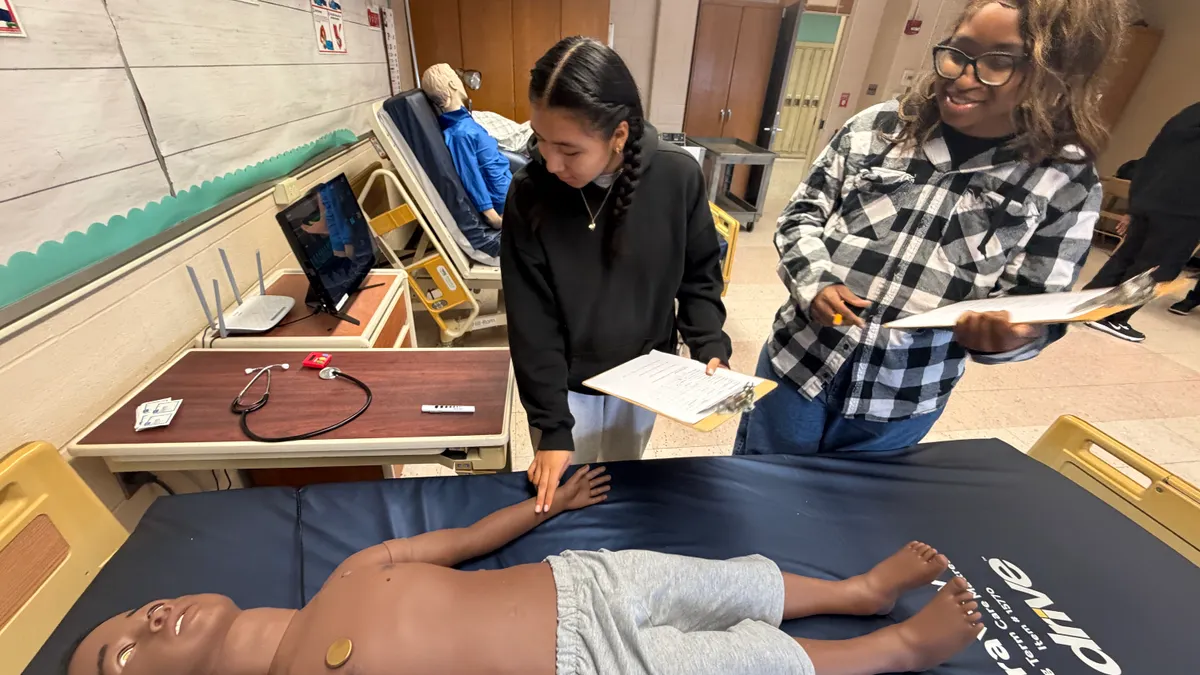Considered so crucial a skill, CPR is now a requirement for students before earning a high school diploma in 39 states and the District of Columbia. This fall, California becomes the newest state to join that list, under a bill Gov. Jerry Brown signed in 2016, requiring the state’s high schoolers to get this medical training before graduating. That leaves just 11 states, including Maine and Colorado, not on the list, according to the American Heart Association (AHA).
Schools are working to provide students with more technical skills, including competencies in medical the field. Yet it may be more accurate to call CPR a life skill, as almost 90% of people who experience cardiac arrest out of a hospital die, according to the AHA. CPR that begins within the first few minutes of cardiac arrest, “can double or triple a person’s chance of survival,” noted AHA’s web site.
No wonder, then, that states are considering the skill a necessity. In fact, in Norway, where CPR is taught in schools as part of its curriculum, the average survival rate from someone who goes into cardiac arrest jumps to 25% — far better than the 10% claimed by the AHA, according to a 2018 Lancet editorial.
While CPR techniques are used by medical personnel and first responders, students are able to learn the skill in as little as one class period. Classes often weave in choking techniques and even demonstrations on how to use an automated external defibrillator (AED), that delivers an electric shock to the heart to stop an irregular beat, or help restart normal rhythm following a heart attack.
The Los Angeles Unified School District, for example, works with MySafe:LA, a charitable organization launched in 2008, to teach fire safety to 4th graders at the Battalion 5 fire station in Hollywood, David Barrett, the group’s co-founder and director of education, said in an email.
In-person vs. online
While there are online course options for first aid — including those offered by the AHA — to earn an AHA course completion card, students must have hands-on time to practice these skills either through an instructor or what AHA calls "a voice-assisted manikin."
In-person demonstrations also seem to be the most popular way to work with high school students. That’s the method Limestone High School in Bartonville, Ill., used when it had instructors come from OSF HealthCare Saint Francis Medical Center in Peoria, about five miles from the school. More than 80 mannequins were brought to the school’s gymnasium, so students and staff could practice during physical education classes and after school. Students also learned how to use an AED device.
The instruction blended both a video and a live demonstration before giving students hands-on time. Delmar Smith, the director for cardiovascular services for the medical center, said online resources also help students and staff members review what they’ve learned.
“It is not necessary every year but a refresher certainly never hurts,” he said in an email.
In the Compton (Calif.) Unified School District, a $15,000 grant from the Los Angeles Dodgers Foundation and AHA will train 6,000 high school students in CPR, choking skills, and how to use an AED, district board president Micah Ali said in an email.
Schools will receive training kits, which include mannequins, instructional DVDs, lesson plans and tests. The curriculum is designed so students walk away after one class period fully trained. Manual Dominguez High School was the first school in the district to receive the materials, and the first group of students has already completed the course.
Additional skills learned
OSF HealthCare’s Smith noted that one of the best things students learn from CPR training is confidence — as the fear that they may do something wrong can be one of the main deterrents in an emergency situation. AEDs can also seem intimidating, he added, and yet they’re not only easy, but safe to use.
“This training makes doing CPR very simple and provides a certain comfort level that they can do CPR,” he said. “Moreover, it also does the same for using an AED.”
MySafe:LA’s Barrett says students also learn teamwork because they have to work together as they learn how to use an AED, and they are taught that CPR is most successful when people work together to apply chest compressions and ventilation.
Learning about lifesaving skills can also open students' eyes to what they may want to do in the future, Barrett added. While they have a skill that can save someone’s life, they also have a door opened that may help them “…consider a career in the fire service or medical fields.” That’s an opportunity that may also change their own life as well.





 Dive Awards
Dive Awards











